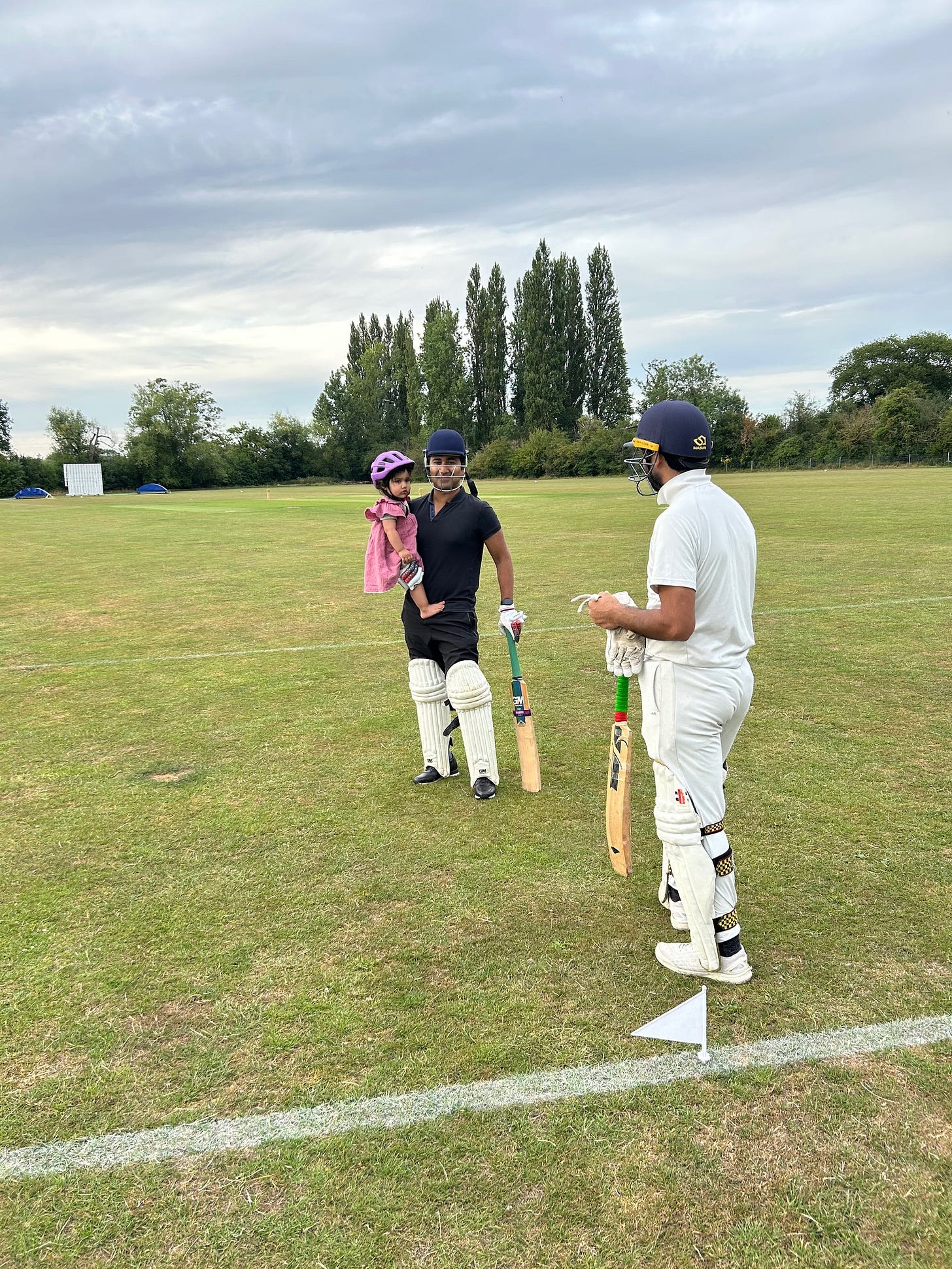Cricket and Philosophy
The difference between higher and lower order pleasures
The Difference Between Higher and Lower Pleasures
This summer, I immersed myself in the cricket season at Oxford. I trained, competed, and played rather well in some matches. One game in The Jack Cox series stood out. I had no help that day, so I brought my one-year-old along. She waited patiently in the pavilion, and the opponent team took care of her while I was on field. Despite being distracted, that match turned out to be my best. It was pleasurable in ways I can’t quite explain.
My on-field experience echoes a debate that has shaped philosophy for centuries. In 1789, Jeremy Bentham set out a vision of morality grounded in the “principle of utility.” For Bentham, what mattered was maximizing the greatest happiness for the greatest number. His focus was almost mathematical: pleasures and pains could be counted and weighed. Eating a good meal or winning a cricket match would be placed on the same ledger as composing a symphony. What distinguished them was quantity, not quality.
John Stuart Mill, writing several decades later, thought this was incomplete. In his 1861 essay Utilitarianism, Mill insisted that pleasures differ not only in degree but also in kind. Fleeting pleasures are shallow. He referred to them as lower pleasures. Those involving intellect, moral imagination, and moral life are higher-order pleasures, he said. His famous line captures the difference: “It is better to be a human being dissatisfied than a pig satisfied; better to be Socrates dissatisfied than a fool satisfied.” For Mill, higher pleasures mattered more because they cultivated the best aspects of human nature.
That distinction is especially relevant today. Shallow pleasures surround us: fast food, endless scrolling, quick dopamine hits. These are not inherently bad, but they can leave us restless and hollow if they dominate our lives. Higher pleasures, in contrast, are harder won. They involve discipline, patience, and sustained attention. They might be found in creative work, civic engagement, learning, deep friendships, or in the middle of an immersive activity.
The challenge, as my own experience suggests, is not merely recognizing the value of higher pleasures but embedding them in our daily lives. Unlike shallow pleasures, which arrive passively, higher pleasures are actively built. They require space, structure, and an act of will, even when our schedules are drowned out by the cacophony of digital noise and endless urgency.
Bentham’s calculus of utility might be seductive, but it doesn’t resonate with me. There is a clear hierarchy of pleasures. In fact, thinking that all pleasures are equal explains why so many of us spend time doomscrolling, abandon our hobbies, and end up ‘time poor’. Attaching the lens of utility to pleasure dilutes it. Of course, I burned calories while playing cricket, but that’s not what made it a higher pleasure.
With technological progress, the avenues for pleasure have increased. One can find riveting cat videos with the push of a button, order a delicious cake with a voice command, and make virtual friends by typing a command on a chatbot. That said, it will be helpful to be wary of the seductive pull of lower pleasures. They might fill our day with short bursts of happiness, but leave us utterly dissatisfied at the end of the day. Pleasure, it turns out, is not and should not be effortless.


